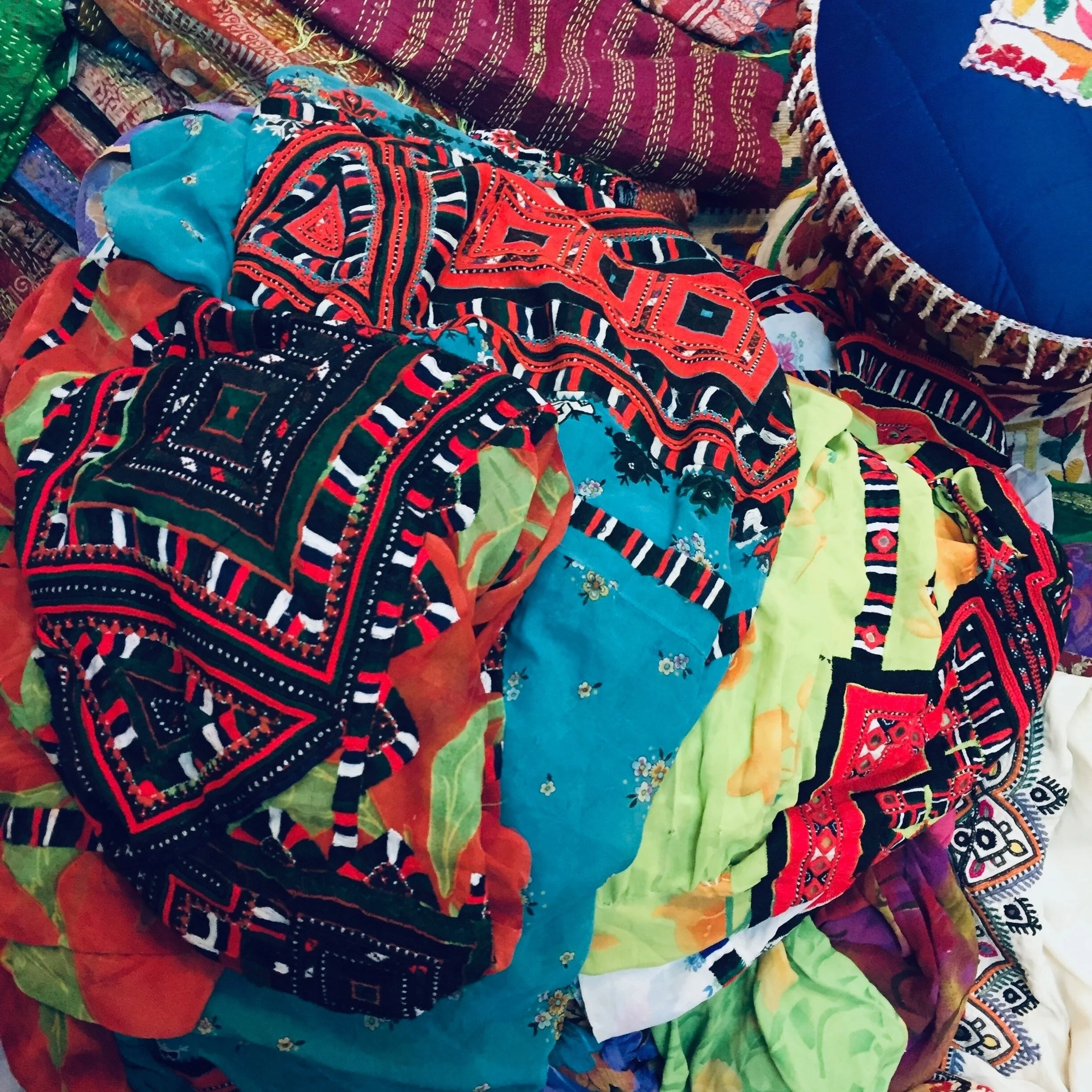The stories behind India Love. What inspires us. Textiles, traditions + crafts. India Love travels. Music, photos + videos.
Some stories about our products. Their travels, tales, origins + uses from around India.

Vintage Baluchi Dresses
These beautiful, colorful vintage dresses come from a region situated between Pakistan, Iran + Afghanistan - Baluchistan (also known as Balochistan). This limited edition collection of dresses come in a range of cotton, chiffon and sometimes satin fabric and are all hand-embroidered in the traditional Balochi style - with black, red, white + sometimes dark green geometrical patterns down the front panel, sleeves and borders. Some styles also come with hand-stitched mirrors in various designs. Traditionally these dresses are worn with trousers and a scarf - similar to the Pakistani + Indian Salwar Kameez. My friend Manoj has family on the border between Pakistan and the Kutchh region of Gujarat, India where some of his relatives and fellow textile traders bring their hauls of vintage garments for barter and sale. From there they make their way to his warehouse in the Pink City where I spend hours, sometimes days, hand-picking each piece myself - usually from a dusty selection of over a few hundred pieces - mostly not in very good shape! Sometimes the power goes out and we have to finish the job with a flashlight. Amidst many chais, lemon sodas + an annual catch up session with Manoj, this is truly treasure hunting at its best. These dresses have been previously loved - and worn - sometimes heavily and as a result they are not in ‘perfect’ condition - which we think makes them perfect! They are vintage, one of a kind pieces which not only honor the beautiful hand-crafted traditions of this desert region but also promote sustainable fashion through upcycling + reusing textiles which otherwise would have been thrown away. These dresses are an undeniable statement piece and will last a lifetime. I hope you love them as much as I do.
xoxo Julia

Kholapuris….
The origin of Kolhapuri Chappals :: chappal generally translates to sandal or slipper and Kholapuri here indicates the town of Kholapur, Maharastra where they were said to originate. The Kholapuri chappal appears to date back to 12th century when the King Bijjala and his prime minister Basavanna encouraged Kolhapuri Chappal production so as to uplift the cobbler community. According to historic records, Kolhapuris were first worn as early as the 13th century. Previously known as Kapashi, Paytaan, Kachkadi, Bakkalnali, and Pukri, the name indicated the village where they were made.
It can take up to six weeks to make a pair of Kolhapuris. Originally made from buffalo-hide and thread, they weighed as much as 2.01 kilos because of the thickness of the sole, which made them durable despite the extreme heat and mountainous terrain found in the state of Maharastra were they are thought to originate.
The designs have moved from the ethnic to ones with more utilitarian value and materials from primal hard materials to softer and more comfortable to wear materials. The artisans themselves designed ethnic patterns and sold, but today the traders and businessmen with demand for cheap products drive the requirement of minimalist designs.
Kolhapuri chappals are known to last a lifetime if maintained well and not used in rainy seasons. [Sourced from Wikipedia]